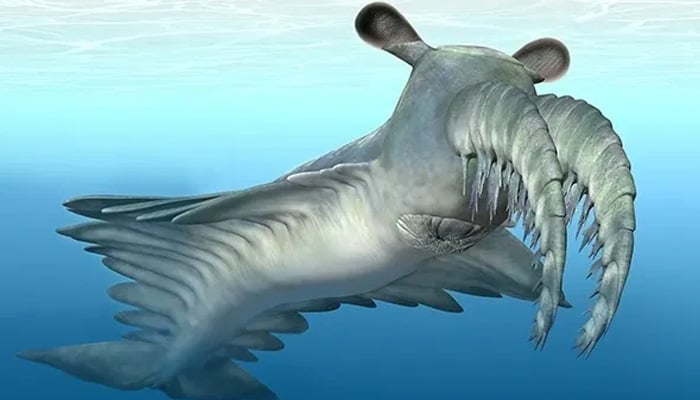Fossils reveal monster shrimp terrorised ancient seas like a megalodon
It was a great white shark kind of specie of its time and hunted for soft prey, with considerable speed
July 05, 2023

Newly discovered fossils of a billion-year-old sea creature have revealed it to be an ancient giant predator shrimp with bulging eyes that was always on the prowl for food, according to a new study published in Proceedings of the Royal Society B Biological Sciences.
Up to three feet in length, this ancient sea species was one of the biggest creatures of the Cambrian era — a time when most major animal groups first appear in the fossil record.
Scientists have named this unusual sea creature as Anomalocaris canadensis or “weird shrimp from Canada”, which had a segmented body that ended with a tail fin.
According to the research, the giant shrimp had formidable claws for holding prey and a circular mouth lined with tooth-like serrations. It was apparently very terrifying as each of its two eyes sat on stalks.
It was a great white shark kind of specie of its time and hunted for soft prey, with considerable speed.
However, it was unable to open the shells of ancient marine arthropods called trilobites.

Lead author Dr Russell Bicknell, of the American Museum of Natural History, New York, said: "That didn’t sit right with me, because trilobites have a very strong exoskeleton, which they essentially make out of rock, while this animal would have mostly been soft and squishy."
Its armour-plated, ring-shaped mouthparts sparked doubts that it could eat hard food.
They reached a conclusion after preparing a 3D model of the ancient beast, using modern whip scorpions and whip spiders as models they were able to show the predator's segmented appendages were able to grab prey.
Anomalocaris was likely a speedy swimmer, zooming after soft prey in the water column with its front appendages outstretched.
Dr Bicknell stated: "Previous conceptions were that these animals would have seen the Burgess Shale fauna as a smorgasbord, going after anything they wanted to, but we're finding that the dynamics of the Cambrian food webs were likely much more complex than we once thought."











